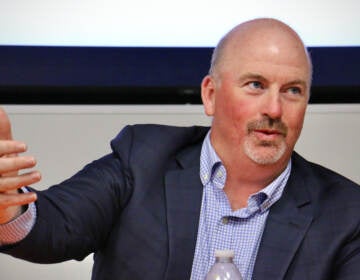Why are environmental groups silent on population growth and immigration?
According to a recent article in the New York Times, the U.S. birthrate has fallen steadily from 3.6 births per woman in 1960 to 2.0 today, or just under the replacement level. And yet the U.S. population is expected to grow from 311 million people now to 478 million, adding another 167 million people, by the end of the century. How can the population increase so dramatically when the birthrate is below the replacement level? The answer is immigration.
The United States is second only to Australia in the amount of carbon dioxide it emits per person. According to one university study, each American generates seven times as much carbon dioxide as a person in China, and 169 times as much as one in Bangladesh.
“Every person you add to the country makes all these tremendous demands on the environment,” says Joel E. Cohen, chief of the Laboratory of Populations at Rockefeller and Columbia universities. But John Bongaarts, a demographer with the Population Council in New York says, “The global warming community is staying away from anything having to do with population, and that’s frustrating.”
In researching its article on the silence of environmental organizations regarding population growth and immigration, the New York Times reported that most groups it contacted declined to discuss the issue or did not return calls. Two that did respond said that they worked on population-related issues mostly internationally. The few that are trying to address population growth in the U.S. are doing so by trying to further lower the U.S. birthrate below the already lower than replacement level.
Although the New York Times estimated that immigration accounts for only one-third of the growth rate in the United States, that doesn’t count the children of immigrants. The more detailed and specific estimate of the Pew Research Center shows that of the expected 142 million increase in U.S. population between 2005 and 2050, 82% of that increase is attributable to post-2005 immigrants and their U.S.-born children. Only 18% is attributable to growth in the baseline 2005 population.
Are the Republicans right that we don’t have to worry about climate change? Are those droughts, forest fires, floods, and other extreme weather phenomena just a coincidence? Can we add millions of cars and trucks to our highways to serve a growing population without adverse impact? Can we rely on increased oil imports and increased on-shore and off-shore drilling to feed our growing need for petroleum? Can we burn more coal for electricity, or should we rely instead on more nuclear power to keep our increasing number of electrical devices functioning?
Someday even Republicans will have to acknowledge that the environment cannot absorb ever increasing amounts of greenhouse gas emissions and pollution. And then population control efforts will finally and belatedly make it onto our national and international agendas.
WHYY is your source for fact-based, in-depth journalism and information. As a nonprofit organization, we rely on financial support from readers like you. Please give today.




